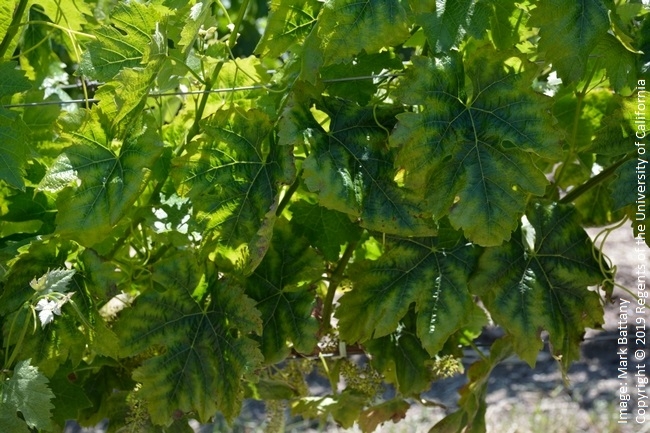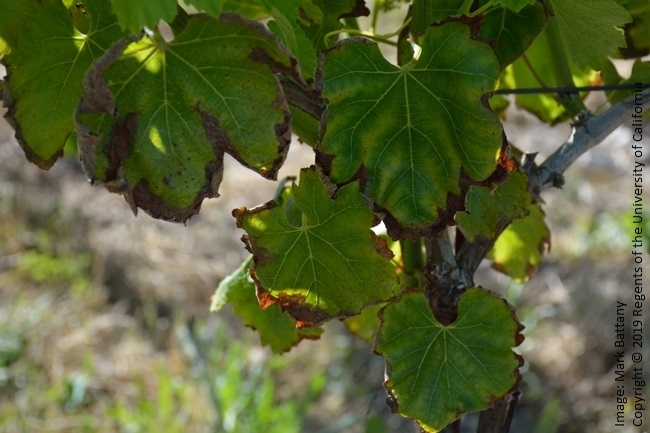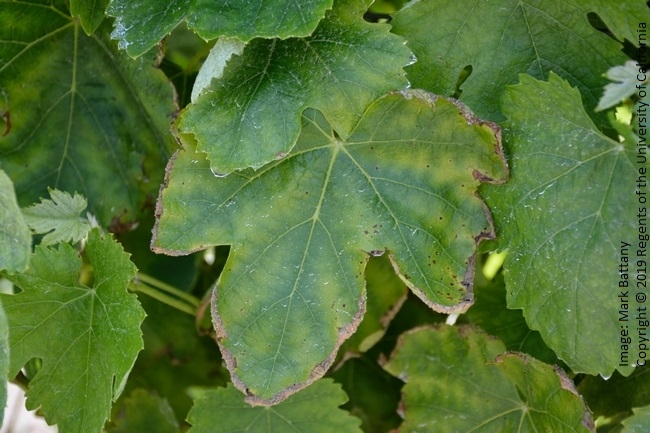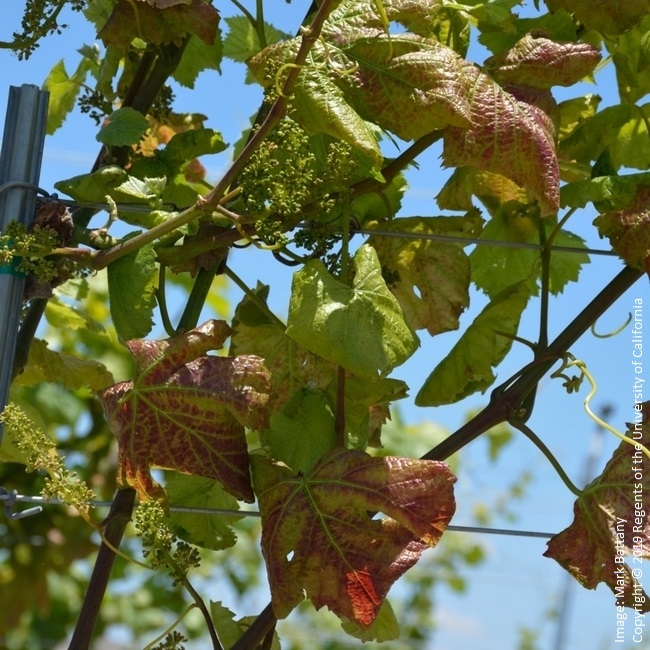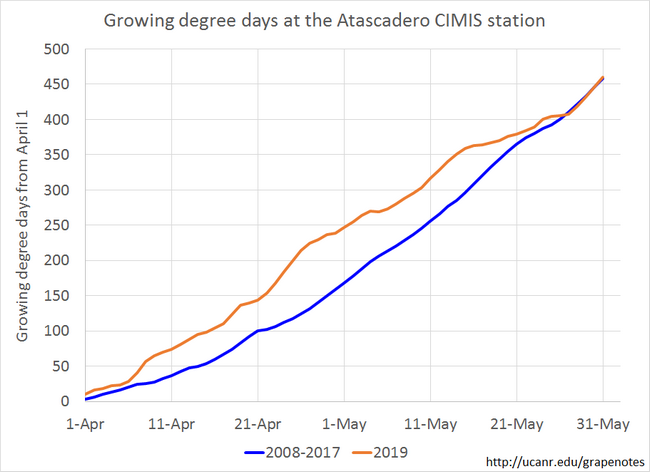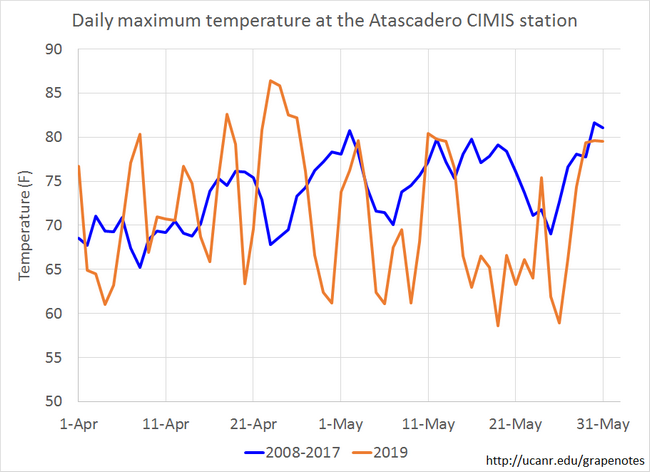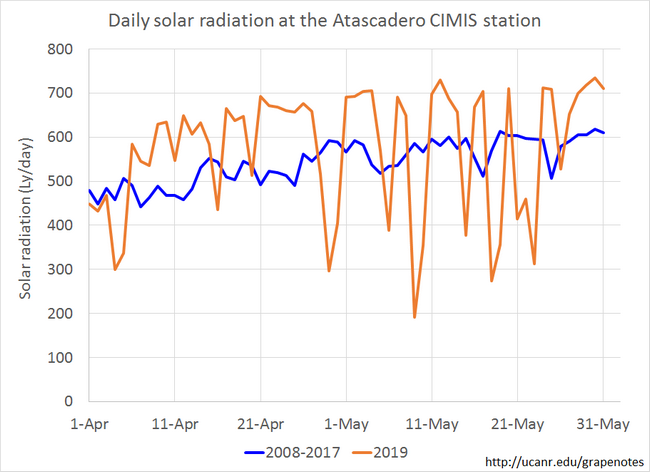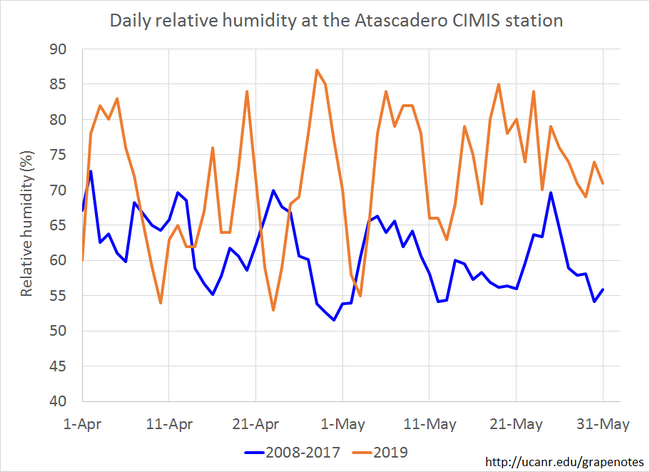Numerous vineyards throughout this region and elsewhere in California have displayed unusual leaf symptoms this spring, consisting of yellowing and/or bronzing of the leaf blades along with necrotic margins in some cases or even necrotic interveinal areas. The affected leaves are always the most basal leaves, with the newest growth not showing symptoms (Figures 1-4 below).
The majority of vineyards in the region are not affected at all. So what is going on at the vineyards with these symptoms?
The wet, cool, cloudy and humid weather conditions in May (Figures 5-8 below) led to reduced vine transpiration and consequently less uptake of the available magnesium and potassium from the soil solution. At sites with limited availability of these nutrients in the active root zone, this resulted in deficiency symptoms in the basal leaves. The symptoms appear in the basal leaves because both nutrients are readily mobile in the vine and will move from the older basal leaves to the newly expanding tissues as needed.
The yellowing of the leaf blade while the area around the main veins remains green is a common symptom of magnesium deficiency; when more severe, the leaf margin will gradually become necrotic, and eventually the interveinal areas of the leaf blades as well. Potassium deficiency is visible as a bronzing discoloration of the leaf blades, potentially with some necrosis of the leaf margins.
Two vineyard situations appear to have displayed the worst of these symptoms this spring: vines of any age on calcareous soils, and very young vines. Why?
Typical calcareous soils will have very low native contents of both magnesium and potassium, unless these have been added as fertilizer. Sites showing strong symptoms in mature vines were likely vineyards where fertilization of magnesium and potassium has been limited, and often purposely so.
Very young vines have correspondingly small root systems which limits their ability to access available nutrients. Symptoms on young vines have been very dramatic even in some areas on non-calcareous soils. This may indicate insufficient levels of magnesium and potassium in these soils, or that these nutrients are found deeper in the soil beyond the shallow roots of the young vines.
With the return of warmer weather newer growth should again be normal; growers with affected vineyards have already observed this pattern.
In most mature vineyards the amount of basal leaf foliage which has been impacted by these deficiencies is not large, but these basal leaves have an important function in providing desired shading for the fruit later in the season. This alteration of the fruit zone shading condition may be the most important consequence this season for mature vineyards that observed strong symptoms this spring.
Young vines suffering more extensive loss of foliage is a concern for achieving desired growth this season. Soil testing would be useful to help ascertain if these sites would benefit from more fertilization.
Should we aim to prevent this from happening again by fertilizing more? Maybe. The primary driver of these deficiency symptoms were the very unusual weather conditions this spring, and such conditions may not occur again for many years. Absent these weather conditions, it is unlikely that these nutrient deficiency symptoms would have appeared; under more normal weather conditions the content of both magnesium and potassium in the soil may have been adequate to meet vine needs. However, sites which displayed strong symptoms are candidates for further soil and tissue analysis to help quantify overall nutritional conditions, and these results may indicate that additional fertilization is warranted.
